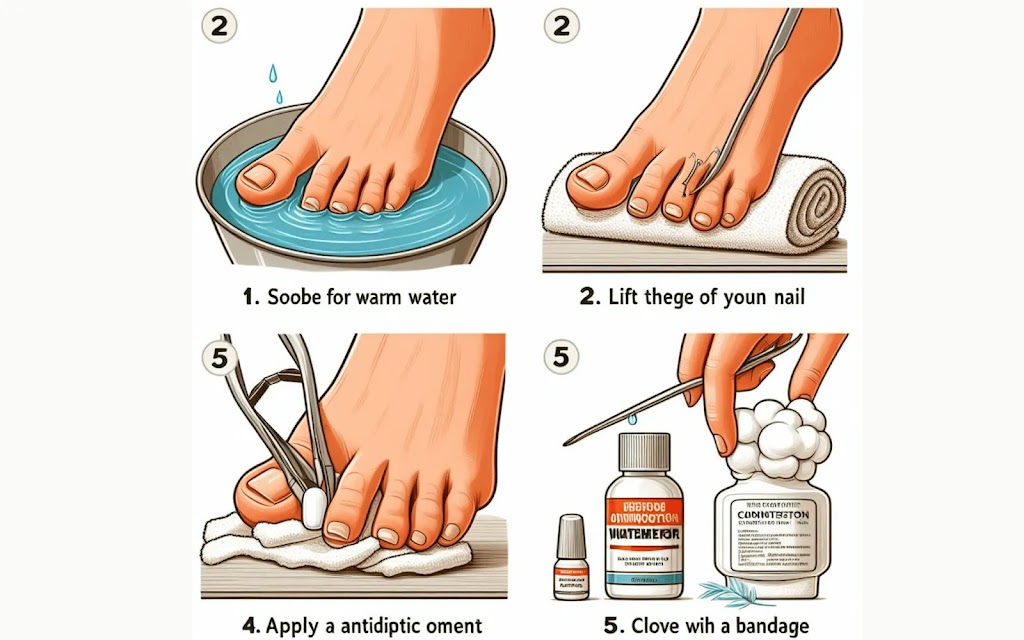How to Fix an Ingrown Toenail
Ingrown toenails, a common foot ailment, occur when the edge of a toenail grows into the surrounding skin, leading to pain, redness, and swelling. This seemingly minor issue can significantly affect one’s daily life and mobility, hence the need for effective management and treatment strategies.
Ingrown Toenails
An ingrown toenail, medically termed onychocryptosis, is characterized by redness, swelling, and sometimes pus around the affected toenail. Common causes include improper nail trimming, tight footwear, and genetic predisposition.
Preventive Measures
Proper nail care is pivotal in preventing ingrown toenails. Nails should be trimmed straight across, avoiding rounding the corners, to prevent the nail from growing into the skin. Choosing the right footwear that provides ample room for the toes can also prevent unnecessary pressure on the nails. Maintaining foot hygiene and moisture can also ward off potential issues.
Home Remedies
Mild cases of ingrown toenails can often be managed at home. Soaking the affected foot in warm, soapy water several times a day can reduce swelling and ease pain. Placing a small piece of cotton or dental floss under the ingrown edge of the nail can help guide its growth away from the skin. Over-the-counter ointments can also be applied to prevent infection.
When to See a Doctor
It’s crucial to consult a healthcare professional if there are signs of infection, such as increased pain, redness, and pus discharge. Those with diabetes or poor circulation should seek immediate medical attention for any foot issues, including ingrown toenails.
Medical Treatments
In more severe cases, medical intervention may be necessary. Procedures include lifting the nail, partially removing the nail and tissue, or in recurrent cases, removing the nail and tissue to prevent regrowth.
Aftercare Following Treatment
Post-procedure care is essential for healing and preventing recurrence. This may involve dressing changes, soaking, and taking prescribed medications as directed.
Complications of Untreated Ingrown Toenails
Neglecting ingrown toenails can lead to complications, including infections that could spread to the bone. Early treatment prevents more serious issues.
Lifestyle Adjustments for Prevention
Wearing properly fitting shoes and socks, and maintaining a routine of foot care, including regular inspection of the feet for any signs of trouble, can prevent many cases of ingrown toenails.
Myths and Facts about Ingrown Toenails
Common myths, such as the belief that cutting a V in the nail will prevent ingrown toenails, are debunked. Facts, such as the importance of foot hygiene, are emphasized.
Ingrown Toenail Remedies for Diabetics
Diabetics must exercise extra caution, as their risk of complications is higher. Consulting a healthcare professional before attempting any home remedies is advised.
Pediatric Concerns: Ingrown Toenails in Children
Recognizing and treating ingrown toenails in children is crucial, as they may not verbalize their discomfort. Gentle care and proper nail trimming can prevent many pediatric ingrown toenails.
The Role of Diet and Nutrition
A balanced diet rich in vitamins and minerals supports overall nail health, potentially reducing the risk of ingrown toenails. Certain foods might promote healthier nail growth, while others could exacerbate the problem.
Conclusion
Proper care and preventative measures can significantly reduce the risk of ingrown toenails. For those suffering, knowing when to seek professional help is crucial to prevent complications. With the right approach, ingrown toenails can be managed effectively, allowing for a quick return to daily activities.

